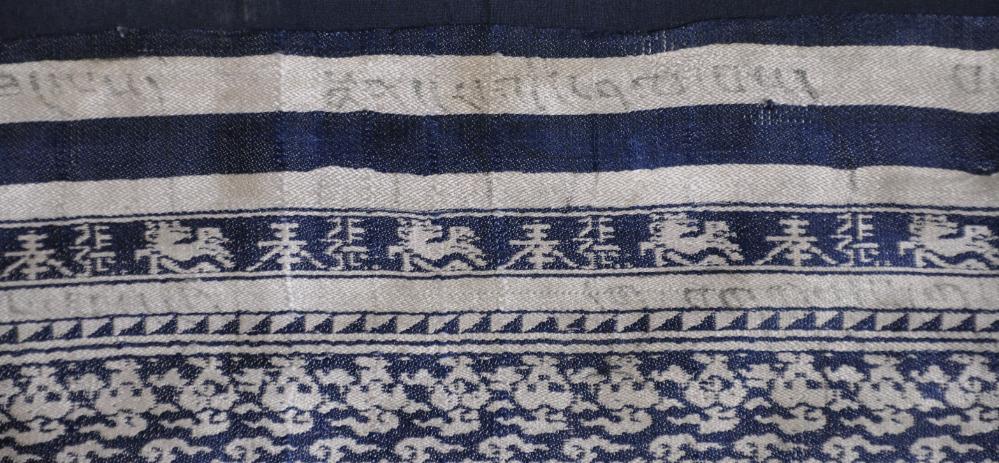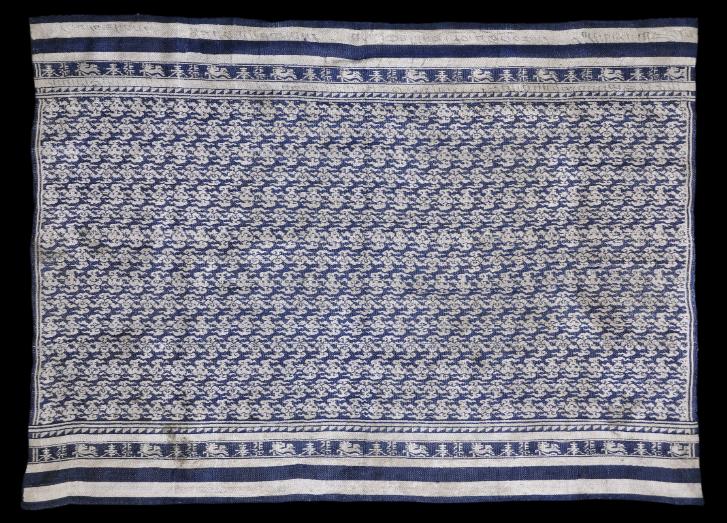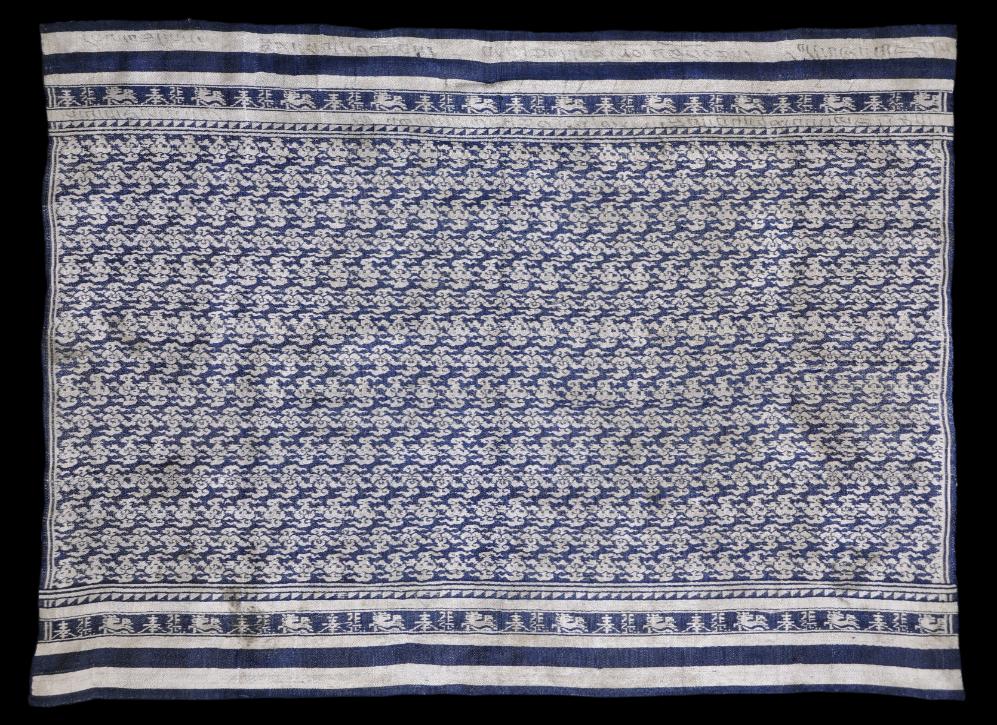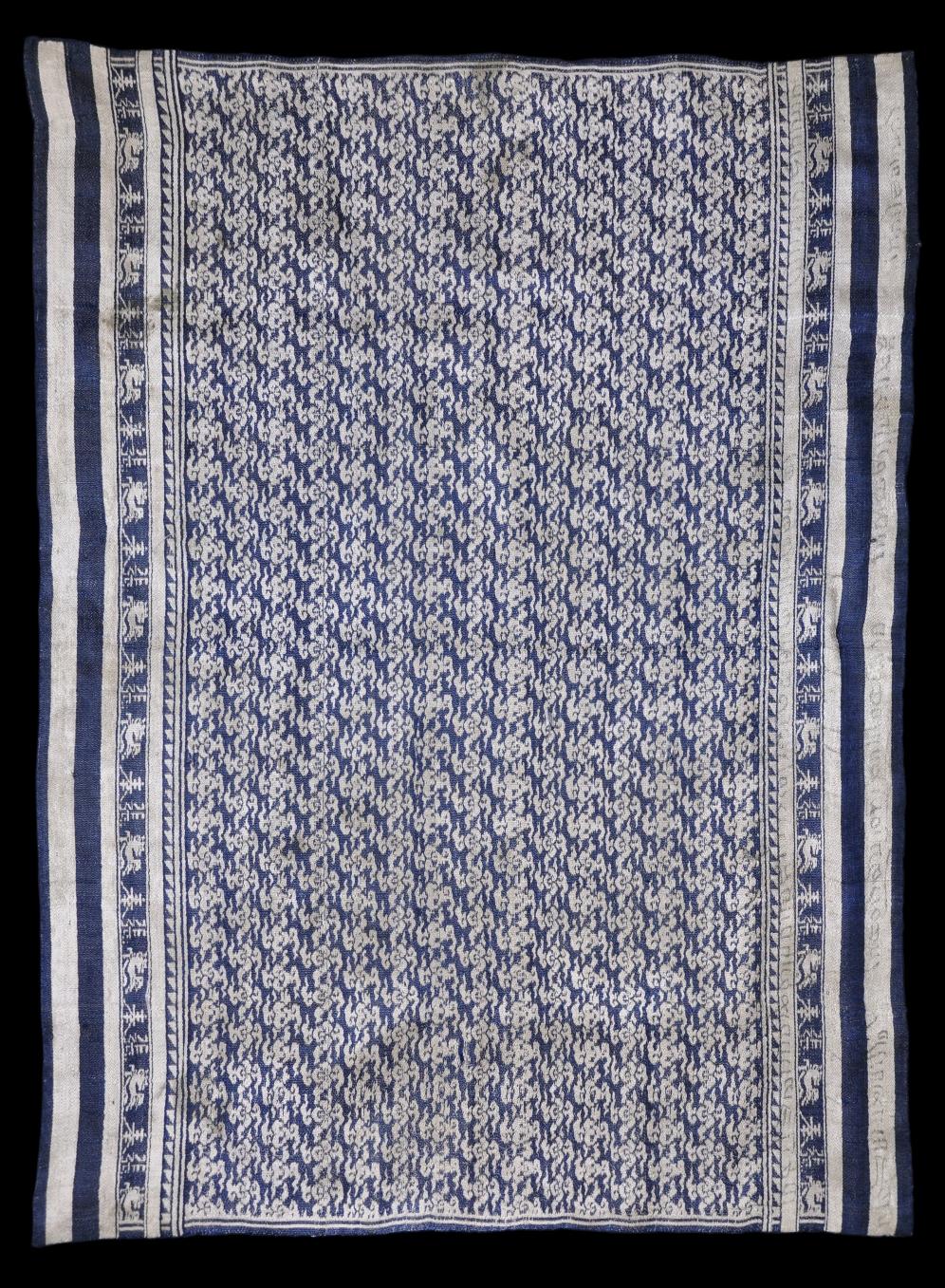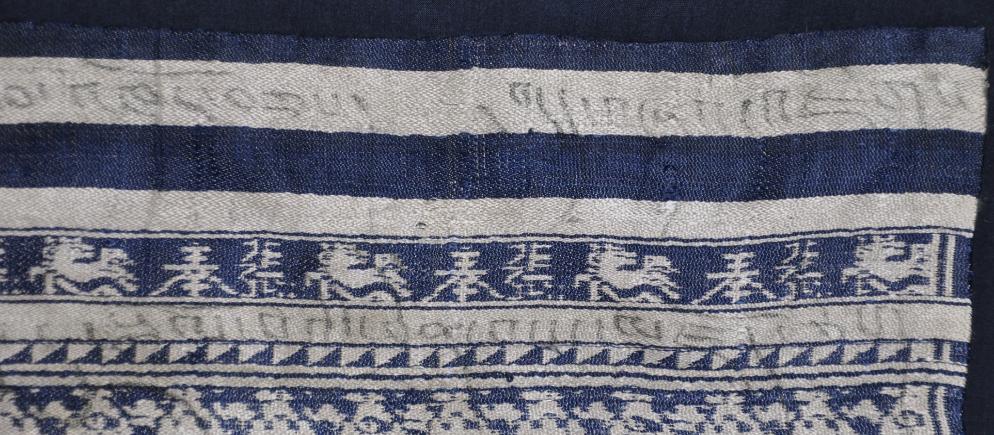
Ming Silk Textile
Woven Silk Sutra Cover, Signed ‘Zhang Feng’ with Tibetan Inscriptions
China
Ming Dynasty (1368–1644)
width: 57.5cm, height: 40..5cm
This finely woven silk-satin (zhusi) textile in cream and indigo dates to the Ming Dynasty and most probably was made for the Tibetan market where it was used to wrap a sutra or sacred text. The handwritten notations in Tibetan script in the white borders of the textile suggest this as its use.
The textile is complete – all its borders are present demonstrating that it has not been cut or trimmed. The main pattern is a repeated stylised cloud motif shaped as a ruyi (‘as you wish’) sceptre. A mid-Ming Dynasty textile with an almost identical form of this motif is in the Palace Museum, Beijing, and illustrated in Kuhn (2002, p. 381).
The top and bottom friezes of the textile here are woven with the maker’s name – Zhang Feng.
See Kuhn (p. 382) for a related Ming textile, probably a fragment, but which also served as a sutra cover.
According to Kuhn (p. 375), Ming Dynasty silks today are preserved in the Palace Museum in Beijing, but also were preserved in temples and monasteries around China (and presumably Tibet and Mongolia) because between 1436 and 1620, there were many printings of the Buddhist scriptures known as the
Tripitaka which were often bound, boxed and wrapped in precious silks before being distributed to libraries and temples around the country.
The textile here is in exceptional condition for its age. There is a tiny area of fraying and some minor staining but otherwise it is intact and bright. It has been gently sewn to a dark blue silk backing to aid in its preservation.
References
Kuhn, D., (ed.), Chinese Silks, Yale University Press, 2012.
Provenance:
UK art market
Inventory no.: 3387
SOLD

